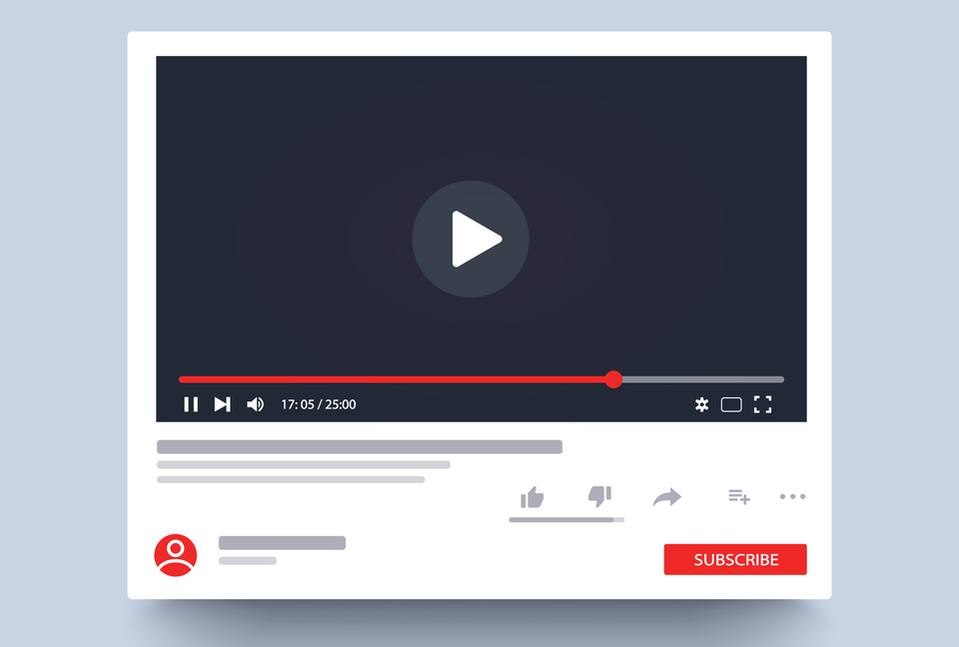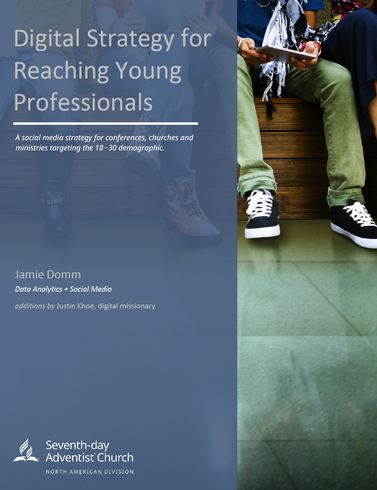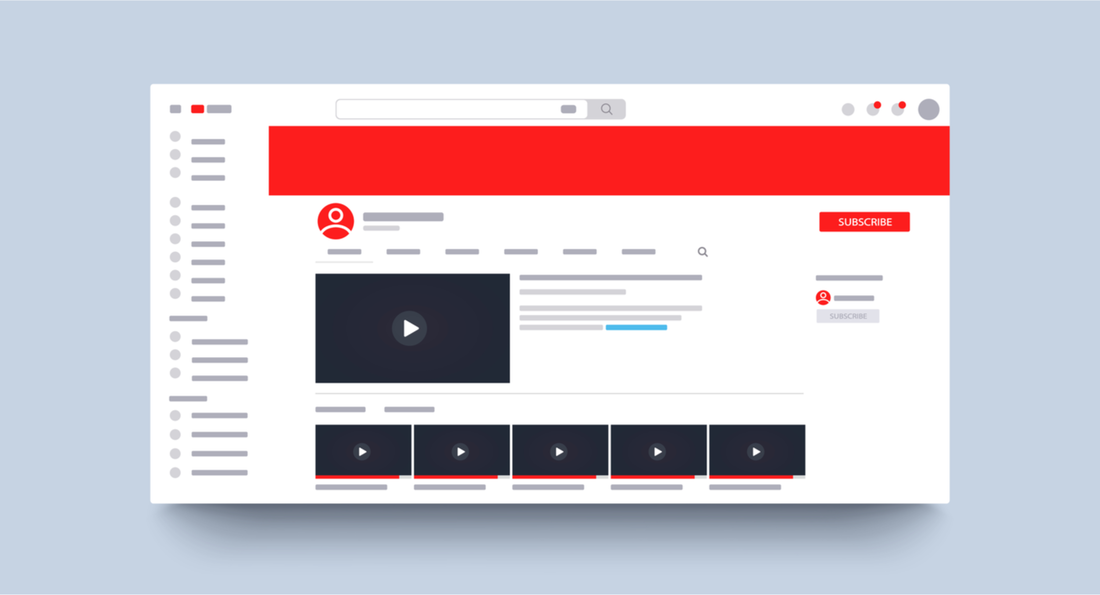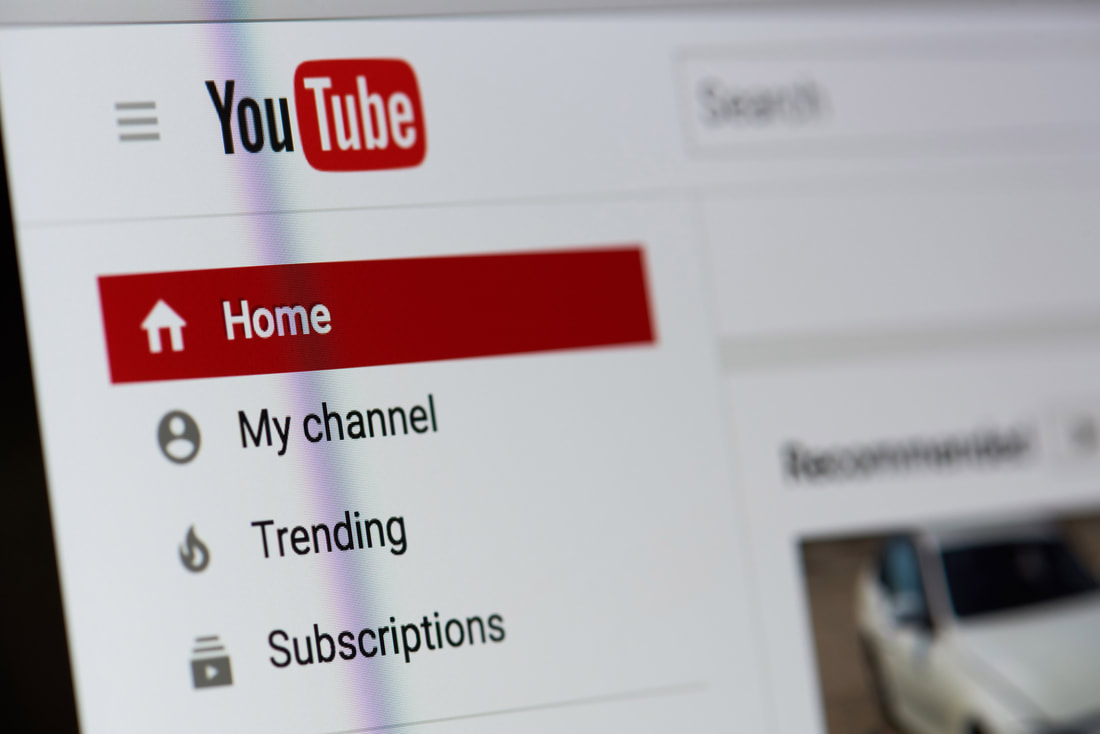Jamie Jean Schneider DommDigital Strategist, Social Media + Big Data, North American Division IntroductionHumanity has been asking existential questions forever. We’re wired for purpose, constantly seeking to answer the big question, “Why?” Although a record-breaking number of believers are leaving brick-and-mortar churches in America, every month, over 100,000 people go on Google and type into the search bar, “Is God Real?” Countless others search for Bible study tools. Our neighbors are asking Siri, not a pastor, “What happens after death?” or profoundly, “What is faith?” The world is going digital, but should the church? The answer is that the gospel should go to all the world, using whatever tools and gifts we have. The eyes of people are on screens, especially the youth. The church must be equipped to go where people’s attention is focused—to be in the world, but not of it. In this free handbook, we’ll demonstrate how to use social media networks for ministry and evangelize to young adults ages 18−30.
Jamie Jean Schneider DommDigital Strategist, Social Media + Big Data, North American Division Justin KhoeDigital Missionary, "I’m Listening with Justin Khoe; Life. Faith. And the things that matter." Before subscribing to your channel, most people visit your channel page to get a bird’s-eye-view of what to expect. It is the number-one place where people will decide to subscribe to your channel and, therefore, requires careful thought. It’s important to understand visitor behavior on the platform. Often, people will watch and like a video that has come up in their suggested videos. Then they click on the name of the creator, which directs them to the channel page. What they find will influence whether they decide to subscribe to the channel to receive that content in their regular feed of videos. Many times, they’re looking for a few specific things, such as: How many videos has this creator uploaded? (after all, what’s the point of subscribing to a channel with only two videos?); how often do they upload? (once a week, twice a week?); what types of videos are they offering? They may also check out your most popular videos. Spend time organizing your channel page to help answer these questions and create a brand look that appeals to the target audience you are trying to reach. Work with a professional designer, if necessary. To start, consider your channel name and how it can tie into your ministry’s branding and goals for being on the platform. Refer to the previous section of this guide on branding to help you identify which direction you would like to go. The name “That Christian Vlogger” immediately communicates to the viewer that they can expect video blogs of Christian content, making the value of the channel instantly apparent. The more common route is to choose the name of a personality or organization. However, this may make it more difficult to communicate purpose and value. Ask, “Does this channel name make a person want to subscribe to the channel?” When an individual uses his or her name, it implies that the channel contains content that is more personal and relatable to the viewer. Be careful to avoid names that only have internal meaning and don’t convey a clear message or value to the broader public. This is especially important for evangelistic channels seeking to reach people outside the faith who may not be familiar with Christian terms. People may misinterpret your content as not being for them. Next, develop strong copy for your YouTube channel’s “About” page. The first sentences are the most important, as this copy will pop up in the hovercard for your channel in several places around YouTube, such as the comment and suggested channels sections, as well as the snippet text in the YouTube search results. Therefore, it’s very important that you are intentional with how you craft this copy. These first few sentences should call out your target audience, helping the reader identify that this content is for them. Also, pitch the value of your channel for that target audience. Ask yourself, “Why should they prioritize my content over another similar channel?” or “How will they be affected by my content?” Assume that the reader has never heard about you before and has no idea what your channel is about. Then take the next paragraph to describe what your channel is about and what a person can expect if they were to subscribe to your channel, including your posting schedule. Additionally, weave keywords that are relevant to your channel into the copy and the content you’re creating. Avoid just listing keywords at the end of your “About” page. Finally, you can include links at the bottom of the “About” page that direct to your website and other social media profiles. The channel trailer is a video that is shown very prominently at the top of your channel page for prospective new audience members. Once they hit “subscribe,” they will no longer see that video. Therefore, create a short channel trailer that speaks directly new people, letting them know what your channel is about or what your goal is, how often they can expect new content (e.g., daily, weekly, monthly), and what kind of content they can expect on a regular basis (e.g., vlogs, comedy, inspirational, etc.). Your channel trailer should feature you addressing the camera directly. If possible, give them visual demonstrations of what your channel will show them with quick clips (i.e., your b-roll) while you speak. These elements combined help create an engaging trailer that sets clear expectations, enabling the viewer to better decide if this channel is for them. The channel header is found at the very top of your channel and is an opportunity for you to set your brand apart from other channels. Branding helps communicate a greater perceived value. Make sure your branded look is professional, clean, and modern. Include your upload schedule in your header, and use graphics and text to communicate what the channel is about. Consider including a close-up of your face (if you are the “face” of your ministry) that enables the viewer to see the whites of your eyes on a small screen. Be sure to also include relevant social media links to your ministry’s other platforms. Consider which videos you want people to see first. One strategy is to highlight your most popular videos in a playlist. By featuring your highest-viewed videos, people are more likely to give them a chance because a significant number of other people have already watched them, indicating they are worth your time. This is called social proofing. Another strategy is to feature your highest-converting videos. These can be identified by looking at your channel analytics to see which videos convert viewers into subscribers the most often. Your most-viewed videos may not effectively convert viewers to subscribers. Spend time organizing your videos into additional playlists based on related topics, choosing your best-performing videos for each topic. This can help create a string of binge-worthy content, increasing the time people spend watching and engaging with your content. You may even want to create a playlist dedicated to new subscribers titled something like “New Here?” or “New to the Channel?” This will allow a newcomer to get to know you and your channel through a curated playlist of videos designed to introduce them to your personality and content. Humans connect better with other humans and stories, so share some of your back story here. Checklist for next steps
Jamie Jean Schneider DommDigital Strategist, Social Media + Big Data, North American Division Justin KhoeDigital Missionary, "I’m Listening with Justin Khoe; Life. Faith. And the things that matter."  While it is true that content is king, it is also true that marketing is queen. On YouTube, the things that most influence your discovery and channel growth (other than quality of content) are your thumbnails, titles, and tags. Each video that you create should have one focal point or one problem that you’re trying to address. Your thumbnails, title, description, and tags should all work in unison to communicate that message and to optimize the exposure of every piece of content you produce. YouTube’s algorithm weighs all the elements of your video—views, length, titles, tags, etc.—to determine whether to promote that particular video in related search queries, suggested videos, and on the homepage. Most people will find your video through a search query or a related video, so it’s important to have a solid strategy to increase your exposure. Therefore, knowing how to optimize your thumbnails, title, and tags is essential to growing an audience. Best practices for each element
If you’ve already established a library of content on YouTube, go back and optimize each of these elements. This will cause YouTube to reevaluate each of your videos and their ranking, helping to better position your existing content. These four elements combined help increase the authority of your channel content, but don’t expect immediate results or for your first video to go viral. YouTube also assesses the quantity of content your channel has produced and gives more authority (and better rankings) to channels that have more content because there is more for people to watch. Expect to put in significant amounts of time to create a wealth of content using these best practices. To be successful on YouTube, you need two pieces. First, you need valuable content that answers people’s questions, meets their needs, makes a difference in people’s lives, and is optimized with proper thumbnails, titles, descriptions, and tags. Second, you need consistency when it comes to putting content out on the platform. Do this, and you will see results. Jamie Jean Schneider DommDigital Strategist, Social Media + Big Data, North American Division Justin KhoeDigital Missionary, "I’m Listening with Justin Khoe; Life. Faith. And the things that matter." Your channel or content strategy is simply the direction you plan to take with your videos to help achieve your goals. The easiest way to determine a channel strategy is to ask yourself a few questions about your audience. What are they interested in? What kinds of questions do they have? What types of problems can you help them solve? Instead of guessing at the answers to these questions, spend time with these people, and ask them these questions! Refer to the “Understanding Your Target Audience” and the “Content Strategy” section of this guidebook to help you through this process. Once you determine who your target audience is, ask, “Why should they care about my content?” Develop an overall value proposition for your channel based on the needs or core values of your target audience. The value proposition answers two questions: “What do you offer?” and, “Why does it matter?” What value can you deliver to your target audience through your videos? Once you can answer this question, clearly promote your value in each of your videos. Each video should have the underlying objective of moving you toward your strategic goal. Then develop a content creation strategy that balances engaging your current audience with attracting new viewers through highly searchable and sharable content. If your channel is new or small, plan to gear around 75% of your content toward expanding your audience base. Once you get established with tens of thousands of subscribers, switch the balance to favor fan-centric, community content to keep your audience engaged. There are essentially four types of content:
Establish a secondary value in all your videos based on the perceived relationship your audience can develop with you. Many people will watch your videos and engage because they feel connected to you. The on-camera personality should seek to strategically integrate the relational aspect of your channel into the videos to foster a sense of community. People want to feel like they are getting to know you, trust you, that you’re credible, and that they would enjoy spending time with you in person. People are drawn to authenticity and can relate more easily when you demonstrate your humanity and vulnerability. Your content strategy should ultimately serve to support your ministry’s goals for being on the platform. Refer to the section on “Developing a Strong Foundation” to determine what those goals are and possible key performance indicators. Next Step Identify five other YouTube channels that create the type of content that you are looking to create and start watching their content. Consider this activity market and competitor research. Jamie Jean Schneider DommDigital Strategist, Social Media + Big Data, North American Division Justin KhoeDigital Missionary, "I’m Listening with Justin Khoe; Life. Faith. And the things that matter." As odd as it might sound, to reach a large audience, you must stop trying to reach everyone! Think of your YouTube channel as a TV channel. Each channel has a purpose and an intended audience. For example, ESPN focuses on sports, the Cooking Channel on food, etc.
What is your channel about, and who is your channel for? Is it for women? If so, how old are these women? Are they single? College-educated? What type of hobbies do they have? The more you can clearly define your target market, the more success you’ll have in breaking through the noise and reaching your audience. Next Step Refer to the “Understanding Your Target Audience blog” and write a three- to five-paragraph description of your ideal audience member. |
Archives
August 2020
Categories
All
|
- Home
- BLOG
-
RESOURCES
-
RESOURCE MENU
>
- ADVENTIST IDENTITY GUIDELINES
- BIG DATA RESOURCES
- BRANDING, IMAGE & DESIGN RESOURCES
- CHURCH/MINISTRY SPECIFIC RESOURCES
- COPYRIGHT & TRADEMARK BASICS
- COURSES
- EMAIL RESOURCES
- GUIDANCE FOR HIRING SOCIAL MEDIA POSITIONS
- PODCASTS
- REPORTS & CASE STUDIES
- SOCIAL MEDIA RESOURCES
- (SOCIAL) VIDEO RESOURCES >
- TEXTING 4 CHURCHES
- TRACKING & ANALTYICS
- WATCH VIDEOS & TUTORIALS
- WEBSITE TIPS
- SOCIAL MEDIA GUIDELINES
-
RESOURCE MENU
>
- SEO
- Digital Discipleship & Evangelism
- COVID-19 RESOURCES
- eNEWSLETTER





 RSS Feed
RSS Feed